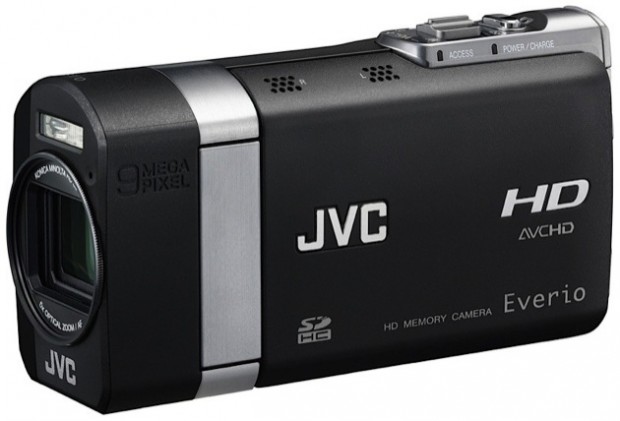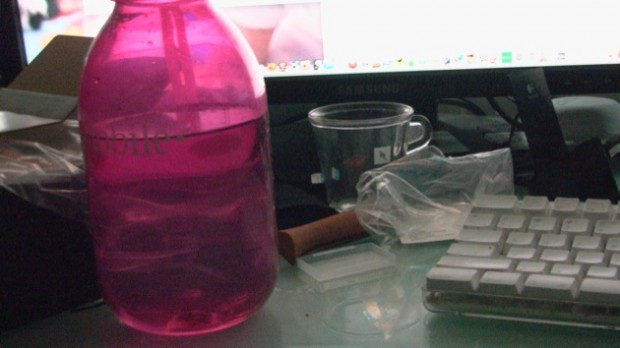What is the Everio X GZ-X900? Is it a pocket camcorder like a Flip? Is it a fully-fledged video camera? Is it a YouTube-uploading device? Is it a hybrid of all of these – and more?
This new Everio is basically a compact video camera that records at full 1920×1080 1080i resolution at 24Mbps in its highest setting. It can take 9-megapixel still images and records directly to an SD/SDHC memory card. It weights 300 grams (.66 pounds) and has a 2.8-inch color screen.
So you want to record at 1080i, eh? Well you’d better have a huge SDHC card because the max you can record is three hours on a 32GB model. A 4GB one can hold 20 minutes at UXP resolution and 2 hours at EP resolution (1920x1080i @ 5Mbps).
This brings us to the question: do we as a species need to record at 1080i? No. We do not. There are precious few ways to use this full HD content except for direct TV playback but, god bless us, we’ll die trying.
The camera is fairly idiot proof and small enough to fit in a pocket or purse. It is about as big as two Flip HD cameras laid end-to-end. The styling pays homage to leather and brushed steel and Konica Minolta lens hides deep inside the case and offers shake reduction and 5X zoom. Interestingly you can actually watch the lens go absolutely nuts inside the camera when you look into the hole to the lens assembly.
In terms of image quality you’re going to see quite a range. The camera really fails in low light. The pictures are grainy and the video is grainier. However, in bright light or sunlight you get amazingly crisp video and images. This is a large trade off and something party-goers may want to consider.
This is a real image taken in partial sunlight. This image is indicative of what you’ll get in anything but full light.
Another interesting feature is the “High Speed Recording” mode which records at 600, 200, and 120fps. This, in essence, allows you to create slow-motion movies. Again, we fall into the low-light trap. This sample footage was taken directly under a desk lamp.
The camera uses JVC’s Laser Touch menu system which consists of a side slider and a set of buttons under the screen. This is not a touchscreen device.
It also records using JVC’s dreaded MTS format. This format should import seamlessly into iMovie and other movie-making software but it requires a bit of conversion.
Then there are few other problems. The device has no mic input, a fairly important addition to something that could presumably take high quality video. This thing is halfway between a high end camera and a toy yet JVC seems to keep nudging towards the latter.
I recorded this video review with the Everio X and the original footage was quite sharp. However, after enough fiddling it became exactly what you see here: YouTube junk. Although we recorded at high quality we learn the real problem with cameras like these – they’re a bit head of their time.
How much would you pay for what is essentially a compact camera that records in HD? $399? $599? Try $999.
Bottom Line
Overall I like the Everio line and am impressed with the amount of power stuffed into such a small package. However I’d be hard pressed to recommend this camera over something like the Kodak Zi6/Zi8 or even any of JVC’s superior HD-based cameras. This is an interesting experiment and if you can overlook the limited storage space and seemingly odd low-light recording issues this may be a contender. For everyone else, I’d look elsewhere.

